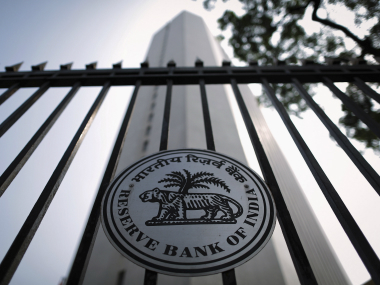A few journalists, both Indian and foreign, were not invited to attend the Reserve Bank of India’s (RBI) fifth bi-monthly policy monetary policy press conference on Wednesday. This Firstpost reporter was among that list.
Also excluded from the press conference were foreign journalists from the Associated Press, Agence France-Presse, BBC and certain other global agencies/television channels. A Wall Street Journal correspondent told this writer that he too wasn’t invited for the meet. The Economist’s correspondent tweeted on Wednesday that he too was denied entry to the central bank’s press conference. This is the first time in several years that most of these journalists and organisations have not been invited to the RBI policy press conference. At the time of writing, the RBI spokeswoman was yet to respond to text messages and emails requesting the reason for the denial of entry. [caption id=“attachment_3118062” align=“alignleft” width=“380”] Representational image. Reuters[/caption] Before examining the likely reasons behind this, let’s understand why this press conference wasn’t just another RBI media interaction on monetary policy. On Wednesday, the presser commanded the world’s attention by being the first meeting with the press by Governor Urjit Patel at the RBI in the wake of Narendra Modi government’s 8 November announcement on demonetisation, which had invoked criticism for its serious implementation flaws and resultant prolonged cash-crunch. Patel’s silence on the issue in the period that followed Modi’s announcement had invited sharp criticism from the media. Except a few press releases on the RBI site and a few interviews, Patel hadn’t offered any guidance to the public on the note ban issue, the situation on the ground and on how long the pain is expected to last. Hence, in many ways, Wednesday’s conference was supposed to be the first chance for the press — both local and foreign — to meet the governor and ask certain questions. So what could have been the reasons for keeping a selection of scribes out? One possible theory could be that the RBI faced severe physical constraints to accommodate a large crowd. Perhaps, in the days of the cash-crunch, it didn’t have enough chairs, pens and papers to distribute to the large group of journalists thronging its premises on policy day. It, thus, decided to cut short the long, regular list of media organisations. If this is the reason, one can’t blame the RBI for trimming its media guest list. The second possibility is that the RBI wanted to conduct the press conference as a peaceful affair without much trouble from journalists asking tough questions on the RBI’s role in the entire demonetisation saga, the many flip-flops in rules seen during the past month, the RBI’s lack of preparedness in foreseeing an impending cash-crunch and about the apparent failure of Patel to effectively communicate during a period of cash crisis. This possibility indicates that the RBI probably wanted less trouble from foreign and local critics at a time when the demonetisation rollout is still at the halfway point. Colleagues from other media houses who attended the press conference told this writer that there was a visible change in the way RBI conducted the policy presser this time. “To begin with, the initial media invite came from one of the deputy governor’s offices instead of RBI’s communication department, which has been the practice for several years,” said a journalist with a leading newspaper who attended the press conference, adding, “There were tags attached to each seat naming the media organisation and the whole event ended in less than 20 minutes. Contrary to the practice, the presser was conducted by Patel himself instead of the RBI spokeswoman.” It is a fact that since the demonetisation announcement, several critical articles have appeared both in the local and foreign press (read
here,
here and
here)
and on this very website , which would not have gone down well with the Central bank. Was this the reason scribes were left out of the policy presser? The RBI hasn’t clarified on the actual reason for the exclusion of a selection of journalists, so far. But, if the reason for exclusion is criticism on demonetisation, this practice certainly doesn’t send a good signal to the outside world and raises certain serious concerns. It undermines the long-practiced principles of transparency, tolerance and professionalism of the RBI — an institution known for its independence and credibility. Over the years, the RBI, considered among the best in world for its ability to guide the economy through troubled times, has made serious efforts to bring transparency to its operations. A part of these efforts included making public the minutes of RBI’s technical advisory committee on monetary policy and organising informal chats with journalists by RBI top brass to explain the bank’s various policy steps. Also, in recent years, top RBI officials have begun speaking at public functions more frequently. All this helped to make the RBI a more transparent organisation. But, if indeed the Central bank has shut the doors for journalists, it has taken a major step backwards in its efforts to bring in transparency. That will only add to the confusions of a change in communication pattern of the RBI ever since Patel took over and especially during the rollout of the demonetisation exercise. It is difficult to believe physical constraints caused the trimming of the media list since anyone who has visited the RBI headquarters even once will know that isn’t the case. Denying access to the press and ducking criticism is the trait of a banana republic. India certainly isn’t one.
A few journalists, both Indian and foreign, were not invited to attend the Reserve Bank of India’s (RBI) fifth bi-monthly policy monetary policy press conference on Wednesday. This Firstpost reporter was among that list
Advertisement
End of Article


)

)
)
)
)
)
)
)
)



